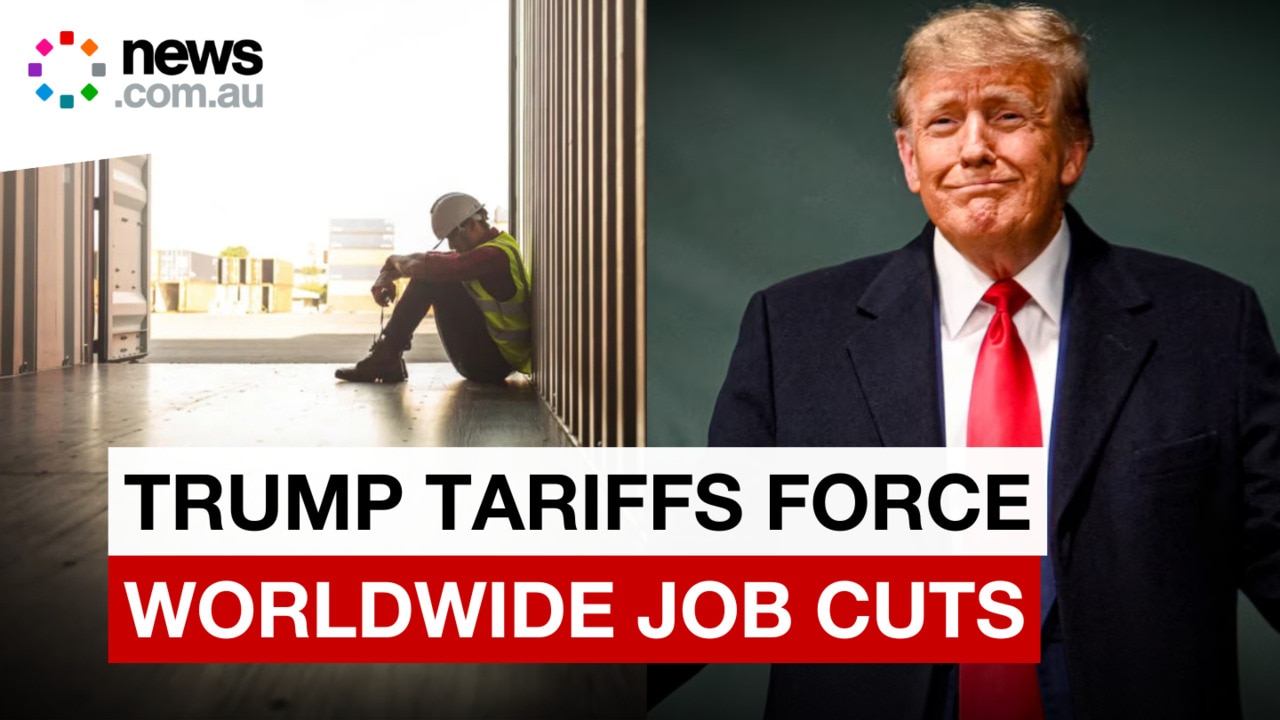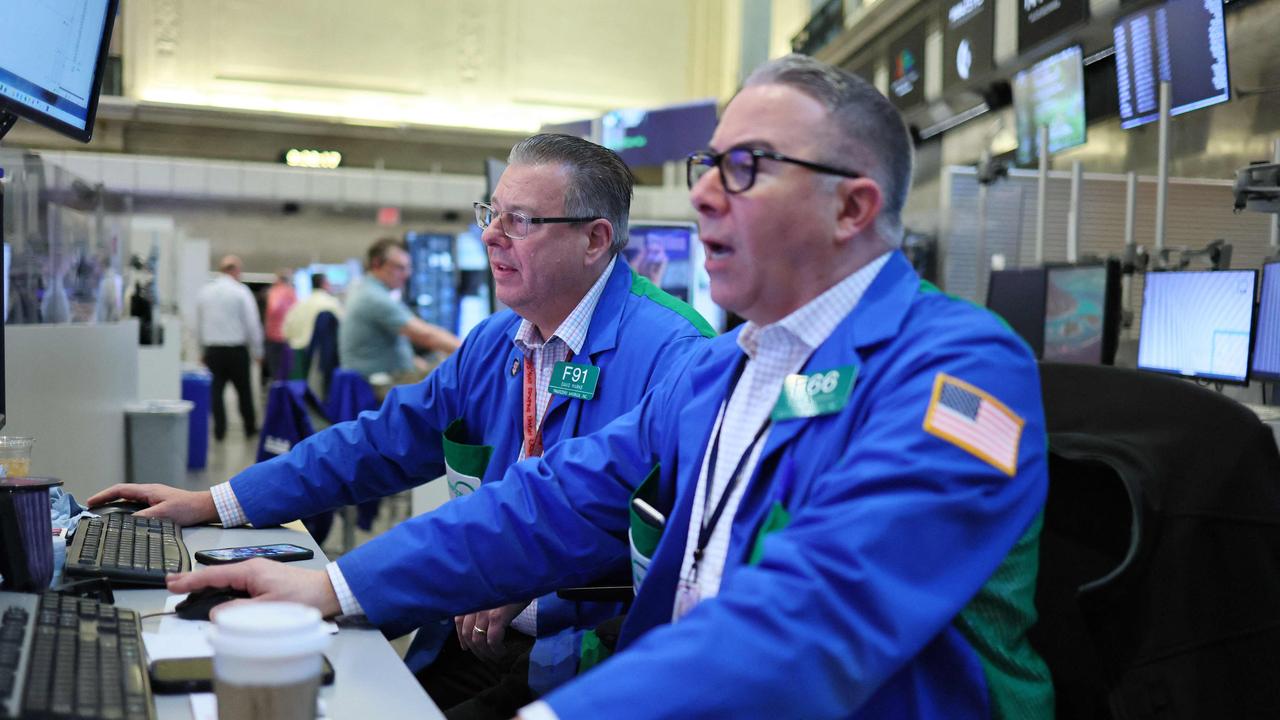Investors beware, share market calm doesn’t look sustainable
Markets have recovered from massive falls but the uneasy calm of recent days may prove unsustainable with a period of economic scarring likely.

Investors beware – the uneasy calm in markets doesn’t look sustainable.
Stocks and bonds mostly recovered from massive falls last month after US President Donald Trump started to backtrack on tariffs and talk up the prospect of trade deals after his April 2 announcements unleashed carnage that spilled over globally.
But there’s been no confirmation of a trade deal with any country as yet and despite US reassurances, China and the Eurozone have denied they’re even negotiating with the US on trade.
Meanwhile it’s too early to gauge the impact of tariffs on economic activity and inflation and a 90-day pause on reciprocal tariffs is due to expire in early July.
At the same time US stock market valuations remain elevated, a looming growth slowdown threatens corporate earnings and the US bond market faces inflationary risks, a cautious Federal Reserve and deluge of supply in the second half of 2025 that could push long-term yield higher.
T. Rowe Price dynamic global bond strategy co-portfolio manager Adam Marden has no doubt that the Trump Administration hit a “pain threshold” when US long-term bond yields shot up last month, despite a near meltdown in stocks that would normally favour defensive investments.
The 90-day pause on reciprocal tariffs came after US 10 and 30-year Treasury yields soared 60 basis points in three days to 4.60 and 5.01 per cent respectively, with Trump saying that while he “wasn’t worried”, the bond market was “getting a little bit yippy.”

“The Administration clearly has pain points,” Marden said. “Scott Bessent’s speeches in January and February hinted at the market to look more at the long end of the bond yield curve than the stock market as a barometer of how they’re doing. Unfortunately the bond market did the opposite of what would be expected in a stock market meltdown.”
Trump’s backdown on tariffs wrested the S&P 500 back from the brink of a bear market.
But it’s unclear if the so-called “Trump put” will be reactivated if the S&P 500 once again crosses the minus 20 per cent threshold or if the 30-year bond yield exceeds the 5 per cent mark.
Meanwhile, the much vaunted “Fed put” may be further away than markets became accustomed to in the years after the global financial crisis and at the start of the Covid crisis when inflation was low and illiquidity in the US Treasury bond market was an issue at times.
“The problem with the Fed is they have a mandate for 2 per cent inflation and they haven’t hit their target yet,” Marden said. “On the financial stability side, as long as things trade, it’s okay.”
“People forget about how bad things were during Covid. Dealers stopped bidding on off the run Treasuries, so unless it was an on the run Treasury, you couldn’t trade that.
“It’s very different from what we’re dealing with right now or what we saw last month.”
Of course Trump may continue to back down on tariffs. This week he moved to stop auto tariffs stacking on top of steel and aluminium tariffs for US auto companies.
But Marden says it’s important to note that US markets were “priced for perfection” this year.
Even if almost all the tariffs are rolled back, he sees a sustained period of economic “scarring”.
“US exceptionalism was completely priced for peak. The NASDAQ was trading at 28 times on extremely high earnings expectations. And then you got the DOGE narrative in February.
“That bled into March and then you had Liberation day (reciprocal tariffs).
“Regardless of what the incremental changes are, it’s important to keep in mind the scarring that will occur from what we have already seen.”
With US equities trading on elevated valuations that are based on questionable earnings forecasts, Marden finds it “difficult to get super bullish on equities and growth in that scenario, regardless of whether Trump comes out tomorrow and just says, ‘okay, never mind, we’re rolling back the tariffs’.”

No one wants a recession, but a “classical slowdown” may be the outcome that would most help out the long end of the bond yield curve, liquidity dynamics and the Fed.
The bond market faces a deluge of paper issuance that’s likely to start in the second half of 2025 as Trump pushes ahead with plans for fiscal stimulus on top of already expansionary settings. But even with an expected slowdown in US economic growth, the Fed will need to be sure that inflation is coming down.
Fed chair Jerome Powell has said in congressional testimonies that the Fed is loath to repeat the mistakes of the 1970’s when the Fed cut rates too much and inflation took off.
It came as Macquarie Equities predicted that stock markets in the US and Australia will revisit their April lows as economic data are likely to weaken in response to US tariffs.
The broker also expects more negative than positive updates from Australian companies at the Macquarie Australia Conference that runs from next Tuesday through Thursday.
“The bullish view is (that) peak tariff panic has passed and all manner of breadth thrusts say stocks climb the wall of worry,” said Macquarie Australia equity strategist, Matt Brooks.
“The more negative view is we are near the top of a bear market rally, PEs (valuations) are still high and the economic hit from tariffs is still to come, and this drives earnings lower.
His base case for stocks unfortunately is the latter.
“Trump has blinked more than once, reducing downside risks, but we see the fallout from tariffs and weakening hard data driving stocks to test the April low,” Brooks said.
“With US yields still high - negative for refinancing and housing - and emboldened by the rally, we suspect Trump makes another negative pivot to get the Fed to cut.
“If stocks successfully test the low and rates are cut, it would be bullish.”
An eventual “pivot” by the Fed is likely to “make for a better buying opportunity” in stocks, according to Macquarie’s Brooks.






To join the conversation, please log in. Don't have an account? Register
Join the conversation, you are commenting as Logout